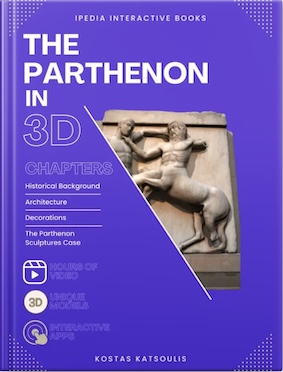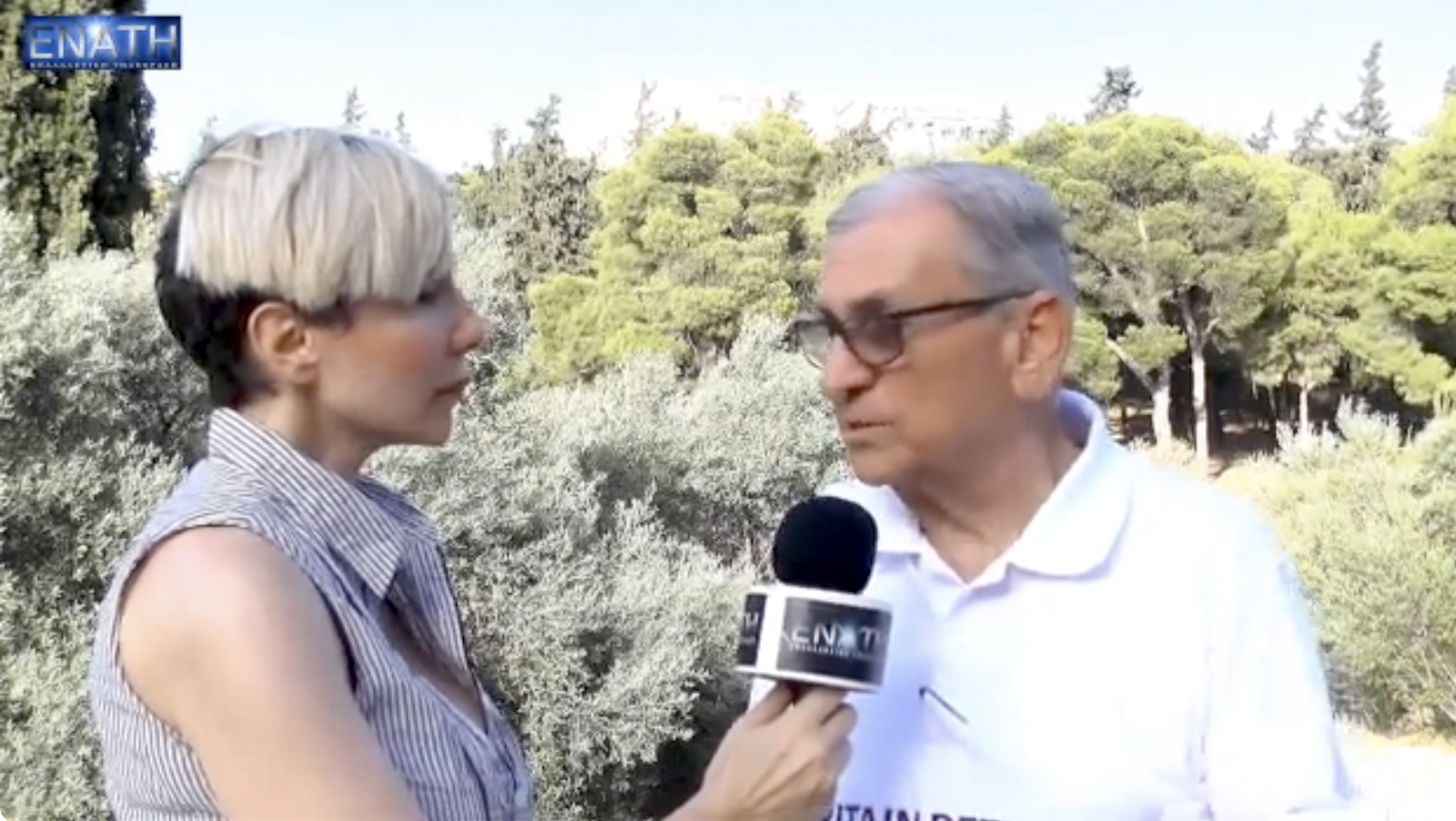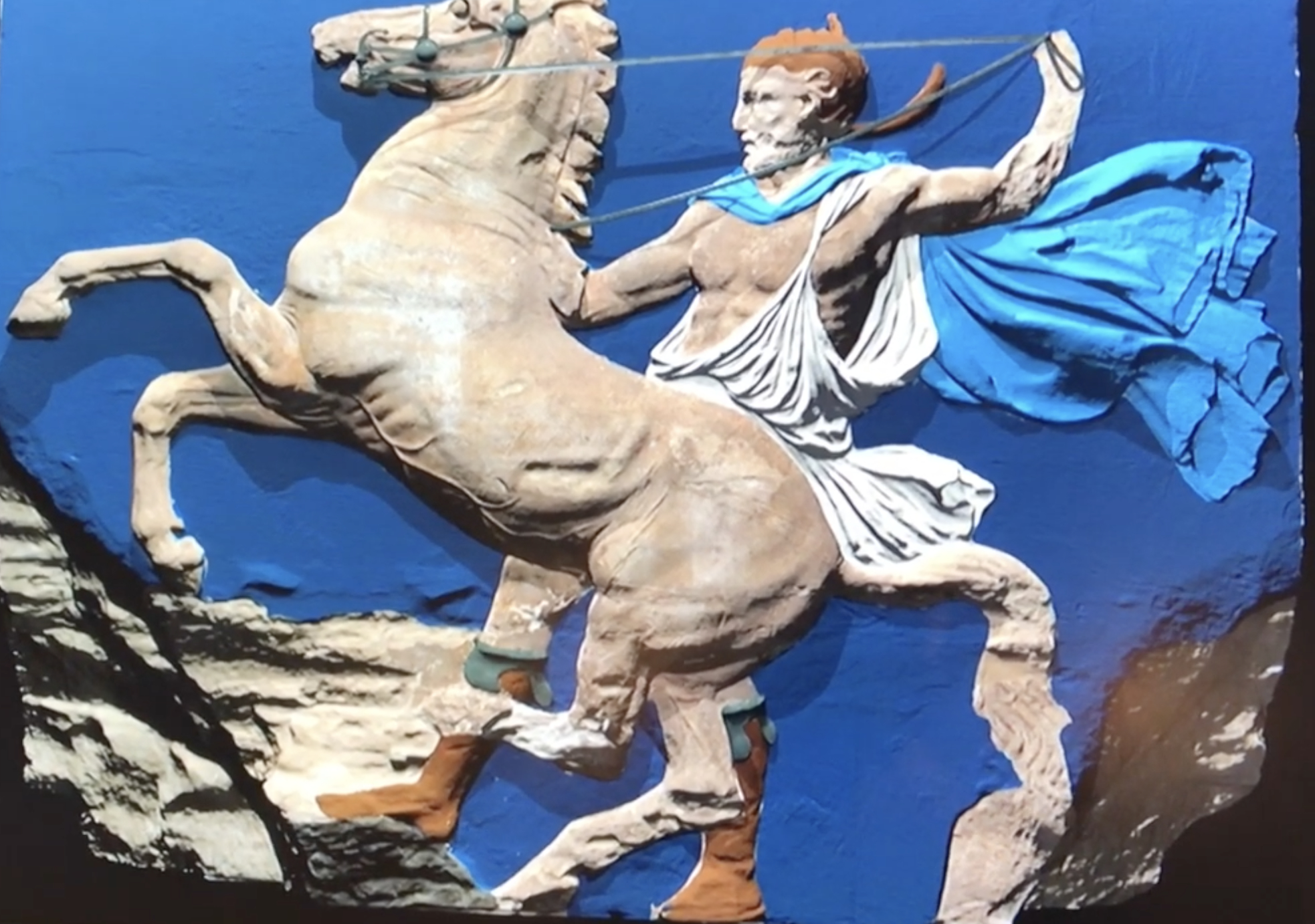
This is the second part of a series of articles by Kevin P. Ray published respectively in GTGreenbergTraurig Blog and The National Law Review
Among disputes over removed cultural objects, perhaps few are better known than that concerning what were formerly known as the Elgin Marbles, which even the British Museum now prefers to call the Parthenon sculptures. It is important to note at the outset, however, that even though the Parthenon sculptures were removed during this long age of plunder, were not actually plundered. They were removed with the apparent permission of the government that had ruled the territory for four centuries. The source of the conflict over the sculptures is twofold – (1) Ottoman rule of the territory of modern Greece was in its final decades, and the movement in favor of Greek independence was on the rise (Greece would attain independence in 1832); and (2) the Parthenon, which even at the time had long been recognized as one of the finest examples of classical architecture and sculpture, became an important symbol of Greek independence and nationalism.
It is timely to consider the Parthenon sculptures as one example of how the past is sometimes not even past. This year marks the 200th anniversary of the British Museum’s acquisition of the sculptures from Lord Elgin. The sculptures comprise roughly 50 percent of the surviving sculptures from the temple, the other half held by the Acropolis Museum in Athens. Additionally, fragments from the Parthenon are held by several other museums, including the Musée du Louvre and the Vatican Museums. Some fragments have been returned to Greece, including those given by the University of Heidelberg and a museum in Palermo, Sicily (the Greek government then loaned this fragment back to Palermo). The Vatican Museums loaned one of its fragments to the Acropolis Museum.
The Parthenon was constructed between 447 and 432 B.C.E., and is regarded as the exemplar of classical art and architecture at the height of Periclean Athens. It was designed and built by the architects Ictinus and Callicrates under the supervision of the sculptor Phidias, and it originally served as a temple to Athena and as a symbol of Athenian civic life. Part of the temple was destroyed by fire in 195 B.C.E., with more destructive fires occurring with the invasion of the Germanic Heralic tribe in A.D. 267 and the Visigoth sack of Athens under Alaric in 396 C.E. In the 5th century C.E. it was transformed into a Greek Orthodox cathedral (Theotokos Atheniotica), then a Roman Catholic cathedral (Notre Dame d’Athenes) under the Franks in 1204, and, in 1458, under Ottoman rule, it was again transformed into a mosque. In 1687, the Parthenon was being used as a military center. During the bombardment of Athens by Venetian forces, a powder magazine located in the Parthenon suffered a hit, and the resulting explosion destroyed a large part of the structure. At the time of Lord Elgin’s ambassadorship, the Parthenon was still being used by the Ottoman army, and was referred to as the “citadel.”
Thomas Bruce, the seventh Earl of Elgin and the Eleventh Earl of Kincardine, was appointed British ambassador to the Sublime Porte (the Ottoman central government in Constantinople) in 1799. Lord Elgin engaged the painter Giovanni Lusieri to supervise a team of artisans and workmen to travel to Athens to make drawings and plaster casts of Greek sculptures and architectural fragments.[1] Although Lord Elgin obtained a document from the Ottoman government (referred to as the “First Firman”) giving his team access to the Parthenon, the access given was unsatisfactory. Lord Elgin’s chaplain, the Rev. Philip Hunt, obtained a second document of permission. This document (referred to as the “Second Firman”), which survives only in an Italian translation, directed local officials to allow Lord Elgin’s team to (1) go in and out of the “citadel,” (2) erect scaffolding, (3) make casts of sculptures and architectural features, (4) take measurements, (5) undertake necessary excavations “in search of inscriptions,” and (6) to take away any pieces of stone with inscriptions or figures (“qualche pezzi di pietra con inscritzioni, e figure”).[2] Lord Elgin, Hunt, and others at the time describe these documents as “firmans,” which were Ottoman legal documents issued directly by the Sultan. As we will see, some scholars have challenged that designation and the claim of legal authority associated with it.
For some, Lord Elgin’s removal of the sculptures’ from Athens was controversial. Lord Byron, a proponent of Greek nationalism and independence, loudly protested the removals, pillorying Lord Elgin in “The Curse of Minerva” (1811):
For Elgin’s fame the grateful Pallas pleads,
Below, his name – above, behold his deeds!
Be ever hailed with equal honor here
The Gothic monarch and the Pictish peer:
arms gave the first his right, the last had none,
But basely stole what less barbarians won.
More accessible in London than they had previously been in Ottoman-ruled Athens, the sculptures inspired many, including Keats, whose viewing of the sculptures on display at the British Museum in 1817 inspired both “On Seeing the Elgin Marbles” and “Ode on a Grecian Urn.” The acquisition and display of the sculptures were part of a broader European fascination with classical art and culture that had begun in the mid-18th century, and which had a wide influence on European art and design.
Following Greek independence, the successive restorations of the Acropolis were undertaken, removing later additions and changes in favor of a restoration of the site to the ruins of its Periclean state. Greece has insisted that the monuments of ancient Greece, including the removed Parthenon sculptures, are national cultural patrimony that is the exclusive property of the Greek nation.[3] However, Greece did not make a formal demand for the return of the Parthenon sculptures until 1982, which the British Museum declined.
Although Greece recently considered its options for bringing suit to compel the return of the Parthenon sculptures to Athens, it ultimately decided against taking legal action, concentrating instead on cultural diplomacy. Considering the nature of such a claim with respect to the Parthenon sculptures and the obstacles it would face promotes a more general understanding of the legal issues involved more generally in claims for the return of cultural property that was removed during this period. For the Parthenon sculptures, the main substantive issues are (1) whether Lord Elgin had the permission of the Ottoman government to remove the sculptures from the Parthenon and to ship them to England, and (2) whether any international law exists that would require the sculptures to be turned over. The main procedural issues are: (1) in what court could a case be brought (this involves both what court(s) would have jurisdiction to hear such a claim as well as whether a judgment entered by the court could actually be enforced), and (2) whether suit is barred by statutes of limitations or other technical barriers.
Central to the discussion of whether Lord Elgin had permission to remove the sculptures is the status of the Second Firman. The original Ottoman document, which would have been issued in Turkish, has not survived. What does survive is an Italian translation of that document that was made by Antonio Dane for Rev. Hunt. Commentators have objected to the description of this document as a firman, since is does not bear the distinctive attributes of a firman. It was not issued by the Sultan and does not bear the Sultan’s seal. Both V. Demetriades and David Rudenstein[4]have argued that the Second Firman is a mektub rather than a firman, and they have challenged the authority of any Ottoman official other than the Sultan to give permission to remove the sculptures.[5] Dyfri Williams, Research Keeper in the British Museum’s Department of Greek and Roman Antiquities, acknowledges that the Second Firman is not a Sultan-issued firman, and has pointed out instead that the document was issued by Seijid Abdullah, who served as Kaimakam, the next-highest Ottoman official, answerable directly to the Sultan.[6] Rudenstine suggested that the Second Firman may have been either a draft letter prepared at Hunt’s bequest as a proposal for the permission Elgin sought. But Williams rejects this theory, stating that “not only does the document explicitly state that it is a translation of a letter, not a proposal, but also draft documents were naturally presented to the Porte in Ottoman Turkish, not in Italian.”[7]
Williams points out that “[t]he word firman . . . was clearly used within the Ottoman court and by foreign diplomats and travellers for a wide variety of documents, including travel permits, employment appointments and important imperial instructions, whether authorized by the Sultan or a member of his court.”[8] From a review of the Elgin and Hunt papers, he identifies several documents of permission that were issued in connection with Lord Elgin’s collecting of antiquities during his tenure as ambassador. When Lord Elgin acquired the Sigeion inscription, permission for the removal was given by the Capitan Pasha (Hussein, admiral of the Ottoman navy), and was then “reinforced by a buyuruldi from Hadim Oglou, the governor of the Dardanelles, and an imperial firman from Constantinople that apparently declared the marbles to have been given by the Sultan to Lord Elgin.”[9]
Even if the author of the Second Firman had the necessary authority to permit Lord Elgin’s removals, commentators comparing the language of that permission with the actual removals that were undertaken have generally agreed that what was removed and the manner in which it was removed exceeded what is described in the Second Firman.[10] In his testimony before Parliament, Rev. Hunt was asked whether the Second Firman gave Lord Elgin the necessary permission:
Q: Do you imagine that the fermaun gave a direct permission to remove figures and pieces of sculpture from the walls of temples, or that that must have been a matter of private arrangement with the local authorities of Athens?
Hunt: That was the interpretation which the Vaivode of Athens was induced to allow it to bear.
Q: In consequence of what was the Vaivode induced to give it this interpretation?
Hunt: With respect to the first metope, it was to gratify what he conceived to be the favourable wishes of the Turkish Government towards Lord Elgin, and which induced him rather to extend than contract the precise permissions of the fermaun.[11]
For Prof. Merryman, although the removals exceeded the Second Firman’s permission, nevertheless subsequent documents from and actions of the Ottoman authorities ratified Lord Elgin’s actions. “It is the law everywhere,” Merryman noted,
that an act in excess of the authority originally ranted can be ratified, expressly or by implication from conduct indicating acquiescence. There is evidence that the Ottomans twice ratified what Elgin had done. For one thing, it appears that Elgin caused the Sultan to issue additional firmans addressed to the Voivode and Disdar of Athens, in which the Sultan generally sanctioned what these local officials had done for Elgin and his party. For another, a large shipment of Marbles was held up in Piraeus (the port of Athens) because the Voivode, under pressure from the French, refused to give his permission for their embarkation. Eventually the Ottoman government gave written orders to the Athenian authorities to permit the shipment, and the Marbles were allowed to leave for England. Together these two events make a strong case for ratification of the removal, even if it exceeded the authority given in the original firman. If the removal was so ratified, then as a matter of international law the removal was legal, and Elgin was able to transfer title in the Marbles to the British Museum.[12]
Williams expands on Merryman’s theme of ratification, providing further documentary detail, but the idea of ratification has not quelled challenges to the legality and propriety of Lord Elgin’s actions.
It is often said that the primary obstacle a claim for the return of the Parthenon sculptures would encounter is the running of the statute of limitations. Statutes of limitations are certainly the most obvious initial procedural challenge to such ancient claims, but they apply variously in different jurisdictions (for instance, when the statute of limitations begins to run and whether they can be tolled under certain circumstances). More importantly, statutes of limitations are creatures of domestic law, with limited application in international law. Jeanette Greenfield has noted that “international law does recognize a bar of claims by lapse of time, although this argument is more likely to succeed where there is estoppel through acquiescence.”[13] Limitations periods would be applicable and would need to be addressed through arguments for tolling in both the UK and the US. Laches would also present a challenge, since Greece has known where the sculptures are held for two centuries without instituting legal action. No limitations period would bar litigation in the Greek court, but any judgment entered would likely be regarded and politically motivated and recognition and enforcement of such a judgment would be difficult. Although no limitations period would bar the bringing of an action before the International Court of Justice, the ICJ statute allows parties to limit the court’s jurisdiction to restrict retroactive effect. Greece included no temporal restriction in its declaration of ICJ jurisdiction, but the UK has restricted its agreement to the court’s jurisdiction to disputes arising after January 1, 1984. No limitations period applies directly in an action brought before the European Court of Human Rights, but the claimant would need to first exhaust domestic remedies, in which domestic limitations periods would apply.
Apart from the procedural challenges to bringing such an action, the most significant obstacle to a legal claim for the return of the Parthenon sculptures is whether Lord Elgin’s removal of the sculptures violated international law applicable at the time or their return is mandated by modern international law. As I have described earlier in this article, although a number of commentators have challenged Ottoman power to allow the removal of the sculptures, the Ottoman Empire was the recognized government of the territory, with the power to dispose of objects within its territory. No customary international law norm existed in the early 19th century prohibiting the plunder of cultural objects during times of war, much less the removal of cultural objects with the apparent consent or acquiescence of the recognized government.[14] When we look to modern international legal norms, we see that the Hague Convention[15] and similar international instruments protecting cultural property during armed conflict do not directly apply to either the original removal of the sculptures or their current retention, since the removals were not undertaken in connection with armed conflict. The Napoleonic wars are certainly in the background, and Ottoman solicitude toward Lord Elgin was strongly colored by the desire to maintain Britain as an ally against Napoleon, but the sculptures were not removed pursuant to an armed conflict. Similarly, neither the UNESCO Convention (which has no retroactive effect) and the UNIDROIT Convention (to which the UK is not a party) apply.
For an action to legally compel the return of the Parthenon sculptures to succeed, what would be required is the articulation of a new rule of customary international law that certain types of cultural property that are central to a nation or a people are the perpetual and exclusive property of that nation or people as a whole and can never be alienated. The argument in favor of such a rule would rely on existing international conventions such as the Hague Convention, the UNESCO Convention, and the UNIDROIT Convention, as well as the European Convention on Human Rights and the 1993 EU Directive on the Return of Cultural Objects, and would argue that these conventions and instruments evidence a trend toward the protection of cultural property in situ in the nations and cultures of their creation. The argument would be that with respect to certain types of cultural property central to the life and identity of a culture or a people, the right to retain, have access to, and preserve such cultural property for posterity is a human right.
Such a rule does not presently exist, and the creation of that rule is highly problematic. It is unclear what limiting principle would apply – how the necessary nexus between nation, culture, and culture property would be established and defined. Broad legal rules tend to be poor tools to address unique situations.
Where the continuing debate over the Parthenon sculptures is concerned, Faulkner’s line resonates – since the past truly is not past. If any resolution is to be reached, whether permanent or provisional, and if the matter is not to be intractable, the discussion will likely need to move away from questions or title, ownership, and recrimination. Absolute positions, as well as national and political emotions, will need to be set aside. That, perhaps most of all, will not be a simple matter. Until now, discussions have tended toward the polarizing practices of debate, with right on one side and fault on the other. Flexibility will be essential, and a negotiated resolution, or series of resolutions, must be mutually beneficial. Although it arose in a very different context (antiquities looted in modern times), the accord entered into between the Metropolitan Museum of Art and Italy in 2006 illustrates one of the ways that disputes over removed cultural property may be resolved. It remains to be seen whether change will occur, or if a hundred years hence the same arguments will still be made.
[1] For more information about Lord Elgin’s removal of the Parthenon sculptures, see William St. Clair, Lord Elgin & The Marbles: The Controversial History of the Parthenon Sculptures (2003).
[2] The relevant language (in the English translation that was appended to the House of Commons Select Committee on the Earl of Elgin’s Collection of Sculptured Marbles &C., Report, 25 March 1816) reads: “It is our desire that on the arrival of this Letter you use your diligence to act conformably to the instances of the said Ambassador, as long as the said five Artists dwelling at Athens shall be employed in going in and out of the said citadel of Athens,…; or infixing scaffolding around the ancient Temple of the Idols, or in modelling with chalk or gypsum the said ornaments and visible figures thereon; or in measuring the fragments and vestiges of other ruined edifices; or in excavating, when they find it necessary, the foundations, in search of inscriptions among the rubbish; that they be not molested by the said Disdar (or commandant of the citadel) nor by any other persons, nor even by you (to whom this letter is addressed;) and that no one meddle with their scaffolding or implements, nor hinder them from taking away any pieces of stone with inscriptions or figures.”
[3] In 2002, Greece enacted Law 3028/2002, “On the Protection of Antiquities and Cultural Heritage in General,” which provides for the protection of cultural property located within Greek territory (including its territorial waters), and provides that cultural property of national significance is res extra commercium, and cannot be transferred to individuals or institutions. Greece has enacted a series of laws protecting its cultural heritage, and particularly its ancient objects, beginning with pronouncements even before Greek’s war of independence was concluded. Greek Law 2646/1899 established “an exclusive right of ownership of the state over all antiquities, movable and immovable, to be found anywhere in Greece, even on private law.” Daphne Voudouri, “Greek Legislation Concerning the International Movement of Antiquities and Its Ideological and Political Dimensions,” in D. Damaskos and D. Plantzos (eds), A Singular Antiquity. Archaeology and Hellenic identity in twentieth-century Greece (3rd Supp.), 125-139 (2008).
[4] David Rudenstine, “A Tale of Three Documents: Lord Elgin and the Missing, Historic 1801 Ottoman Document,” 22 Cardozo Law Review 1853 (2001), available here; “Lord Elgin and the Ottomans: the question of permission,” 23 Cardozo Law Review 452 (2003); “Did Elgin Cheat at Marbles?” The Nation, May 29, 2000, available here
[5] Demetriades argues that three types of Ottoman legal documents were in use at the time: (i) a firman (an imperial document issued by the Sultan himself, which the Letter by the Museum’s own admission is not), (ii) a buyuruldi (a lower level document with more limited authority), and (iii) a mektub (a letter carrying a far more limited ability to convey permission).
[6] Dyfri Williams, “Lord Elgin’s Firman,” Journal of the History of Collections, 1 (2009).
[7] Id. at 8.
[8] Id.
[9] Id. at 8-9. Williams identifies a further example of documents of permission given in connection with Lord Elgin’s collecting: “A second example, dating from the summer of 1801, concerned the securing of pieces of porphyry from various locations in Constantinople, including the lid of the so-called sarcophagus of Constantine that was in the courtyard of the Osmaniye Mosque, although firmans seem not to have been issued, but rather letters and annotated memoranda exchanged between the Reis Effendi and the Sultan.”
[10]See, e.g., John Henry Merryman, “Thinking About the Elgin Marbles,” 83 Mich. L. Rev. 1881, 1899 (Aug. 1985)(“The document appears to contemplate measuring, drawing, and making casts as the principal activity of Elgin’s artists and workmen. The reference to ‘taking away any pieces of stone’ seems incidental, intended to apply to objects found while excavating. That was certainly the interpretation privately placed on the firman by several of the Elgin party, including Lady Elgin.”); and Jeannette Greenfield, The Return of Cultural Treasures, 81 (3rd ed.)( “Even if the terms of the firman as translated are accurate, it is clear that Elgin exceeded them. He acted in a breach of the conditions allowing him to remove items from the Parthenon site, and what he did removed was not included within the descriptions contained in the firman.”).
[11] Rev. Philip Hunt testimony, House of Commons Select Committee on the Earl of Elgin’s Collection of Sculptured Marbles &C., Report, 25 March 1816.
[12] John Henry Merryman, “Thinking About the Elgin Marbles,” 83 Mich. L. Rev. 1881, 1889 (Aug. 1985).
[13] Jeannette Greenfield, The Return of Cultural Treasures (3rd ed.), 82.
[14] See, e.g., Jeannette Greenfield, The Return of Cultural Treasures (3rd ed.), 82 (stating that “There was no body of international law governing removal or protection at that time.”).
[15] Convention for the Protection of Cultural Property in the Event of Armed Conflict, 249 UNTS 240, available here; see also Protocol to the Convention for the Protection of Cultural Property in the Event of Armed conflict 1954, available here; and Second Protocol to the Hague Convention of 1954 for the Protection of Cultural Property in the Event of Armed Conflict, 1999, 2253 UNTS 172, available here



